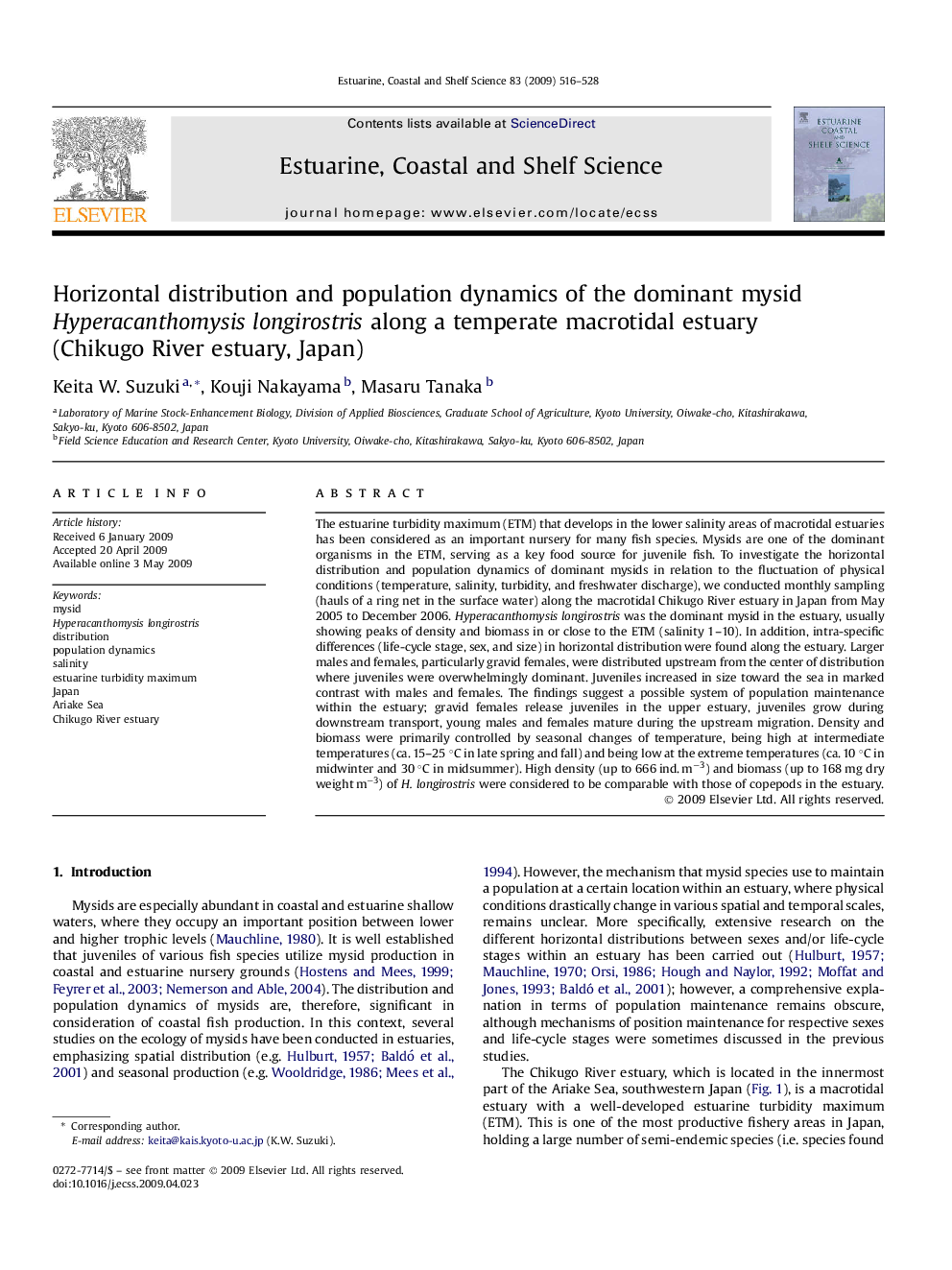| کد مقاله | کد نشریه | سال انتشار | مقاله انگلیسی | نسخه تمام متن |
|---|---|---|---|---|
| 4540853 | 1326696 | 2009 | 13 صفحه PDF | دانلود رایگان |

The estuarine turbidity maximum (ETM) that develops in the lower salinity areas of macrotidal estuaries has been considered as an important nursery for many fish species. Mysids are one of the dominant organisms in the ETM, serving as a key food source for juvenile fish. To investigate the horizontal distribution and population dynamics of dominant mysids in relation to the fluctuation of physical conditions (temperature, salinity, turbidity, and freshwater discharge), we conducted monthly sampling (hauls of a ring net in the surface water) along the macrotidal Chikugo River estuary in Japan from May 2005 to December 2006. Hyperacanthomysis longirostris was the dominant mysid in the estuary, usually showing peaks of density and biomass in or close to the ETM (salinity 1–10). In addition, intra-specific differences (life-cycle stage, sex, and size) in horizontal distribution were found along the estuary. Larger males and females, particularly gravid females, were distributed upstream from the center of distribution where juveniles were overwhelmingly dominant. Juveniles increased in size toward the sea in marked contrast with males and females. The findings suggest a possible system of population maintenance within the estuary; gravid females release juveniles in the upper estuary, juveniles grow during downstream transport, young males and females mature during the upstream migration. Density and biomass were primarily controlled by seasonal changes of temperature, being high at intermediate temperatures (ca. 15–25 °C in late spring and fall) and being low at the extreme temperatures (ca. 10 °C in midwinter and 30 °C in midsummer). High density (up to 666 ind. m−3) and biomass (up to 168 mg dry weight m−3) of H. longirostris were considered to be comparable with those of copepods in the estuary.
Journal: Estuarine, Coastal and Shelf Science - Volume 83, Issue 4, 1 August 2009, Pages 516–528